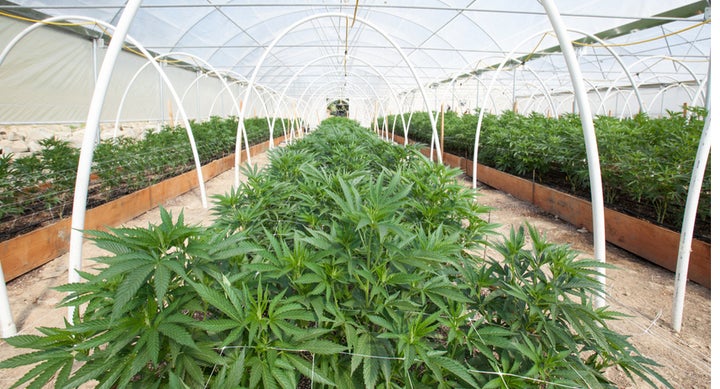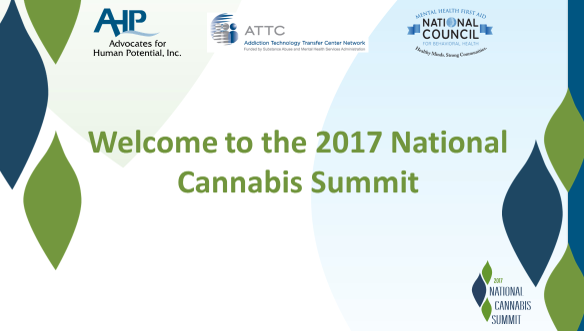
Cannabis
Pot is different from growing, distributing and selling potatoes, beef, salmon or cars, common commodities with of course complex forces at work. But cannabis takes complexity to a whole new level, comparable to tobacco and alcohol - which have been among the principal killers of Americans.
Yet the US is ablaze with cannabis: It is our #1 illicit drug and medical marijuana (MJ) is legalized in 29 states and recreational marijuana legal in 8 states (DC permits both). 63% of Americans live in states with medical or recreational MJ or both. The flame is everywhere and picking up intensity. Over 22 million Americans (12 and older) reported using MJ in the past month.
While some die-hards may imagine prohibiting the use of (especially) recreational marijuana and using law enforcement to make that happen that seems an extremely unlikely, not to mention a futile, path for this country. Informed and candid cops know that arrest and incarceration cannot solve problems of drug use and dependence.
So we face questions like: Should cannabis be fully decriminalized? Should medical and recreational MJ be legalized in all states? Should production and sales be limited? Should the market be allowed its sway? If you as a state feel the heat and it is not if but when, what design logic would be a useful guide? Will it be individual freedom (for adults), free or regulated markets, or the health of the collective, as shaped by public health goals? Who will benefit therapeutically and financially? Who will suffer? What are the ‘least worst’ options, given the well-known public health principle that increased access results in greater use?
These questions are for your consideration as a citizen (and tax payer), consumer, parent, co-worker, business owner or state or federal official. We need to shine some light on a poorly lit set of data (mostly from when MJ was 1/60th as potent as it is today) and experience (which is not at all uniform or robust from the states having gone ahead) to make decisions now. The cannabis fire will rapidly outpace what science and practice may reveal in the years to come.
To examine what we know and what we can do in a clear and sensible way a 3-day, National Cannabis Summit was held in Denver, CO, in late August, convened by three organizations. It was the brainchild of Neal Shifman, CEO of Advocates for Human Potential, a human services research, consulting and training organization. He joined forces with The National Council for Behavioral Health, constituted of 2900 member mental health and addictions treatment organizations, and the Addiction Technology Transfer Center Network, which promotes adoption and implementation of what works for people with Substance Use Disorders.

2017 National Cannabis Summit
The conference smartly assembled a diverse group of government and private stakeholders. In practical ways, it crisply reported and discussed state implementation efforts to date, therapeutic effects and health risks of cannabis, legal and clinical knowledge, and the neuroscience of cannabinoids (the term for the class of diverse chemical compounds that act on our brain and body nerve receptors).
Here are my take-away messages.
Start small, as a state or county. Build slowly. There is no going back from full recreational legalization, especially when for-profit companies are financing its implementation. Imagine when Anheiser-Busch and RJ Reynolds Tobacco Company start promoting and distributing cannabis. Remember “This Bud’s For You”, “The Marlboro Man” and “Joe Camel”? Hence, also ban advertising.
Separate out the growers from the distributors and those two from the retail sellers. Do not permit what is called ‘vertical integration’, where one entity controls the supply chain, which can foster monopoly.
Pursue a harm reduction strategy, as Canada is doing nationally under its progressive Prime Minister, Justin Trudeau. Identify and work to prevent or delay use by pregnant mothers or teenagers, where brains are under development. Add other highly vulnerable populations to that strategy, including those with known predispositions to or with family histories of a substance use or mental health disorder. Don’t smoke cannabis. Vape or eat it: Smoking is really bad for the lungs.
Decriminalize cannabis.
Limit access. Make the minimal age 21, set limits of quantities for legal possession and number of home grown plants (which can become a black/grey market cottage industry), set limits on dosages because potency counts (e.g., 10 mg for edibles), require minimum prices so MJ does not become cheap (as it has in Washington State), and contain production quotas and retail outlets.
Enforce the laws about Driving Under The Influence (DUI) and underage sales.
Don’t permit public consumption.
Require childproof packaging.
Ensure that cannabidiol (CBD) - the second most common cannabinoid in MJ after THC, and without psychoactive properties - is present in MJ products in significant amounts (we still don’t know what that is but it is not near zero) because it appears protective against psychosis.
Direct state (or federal, if that ever happens) cannabis taxes to fund health insurance, as well as prevention (especially for youth) and public information campaigns. Allocate a percentage of taxes to fund de-identified (i.e., privacy protected) state registries and use them to evaluate the impact of legalization on health and public safety - both for its therapeutic value and its harm to the brain and body (including diseases and traffic accidents).
Get the FDA to declare cannabis a Schedule 2 drug, not its current hugely deterring Schedule 1 status, so our country can actually study this drug.
Expect over 40% of current MJ users to ingest 20 or more days/month. Recognize that the predominance of regular users appears to stop on their own or not use abusively, without services (unassisted recovery – see Dr. John Kelly, https://www.recoveryanswers.org/). Ensure that those who need assistance, because cannabis is addictive, can access and continue in treatments known to work.
Sustain or increase federal funding to study the effects and therapeutic potential of cannabinoids, including plant-based THC and CBD as well as the brain’s own cannabinoid system (driven by endocannabinoids).
As citizens and policy makers we need to “lean in” to the dilemma of what to do about cannabis. Silence only lets a vocal minority rule. Like climate change, it is everyone’s issue, deniers notwithstanding. As a friend of mine recently wrote, “A fool can throw a stone into the water that ten wise men cannot recover.” (From Jay Neugeboren, March 2017).
In other words, there is no single or simple solution to the cannabis Rubic cube. We will have to act now, and sensibly, and let science catch up. To paraphrase what Churchill said of we Americans, we do the right thing after we have exhausted everything else. What’s ahead is surely difficult but it is not impossible.
……………………………………………………………………….
Dr. Lloyd Sederer is a psychiatrist and public health doctor. The opinions offered here are entirely his own.
His next book, The Addiction Solution: Fixing America’s Drug Crisis, will be published by Scribner (Simon & Schuster) in the spring of 2018.
@askdrlloyd